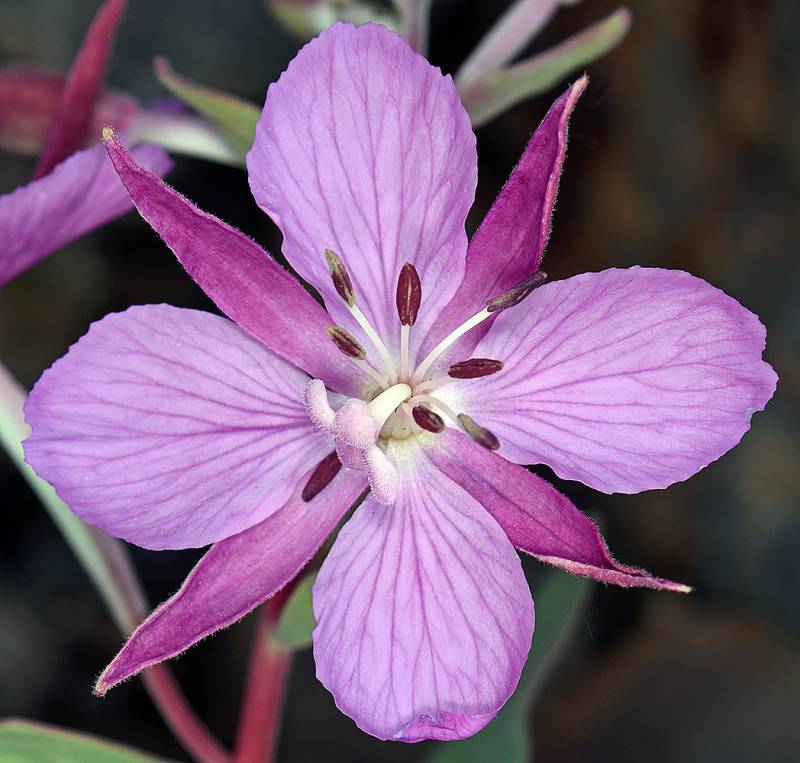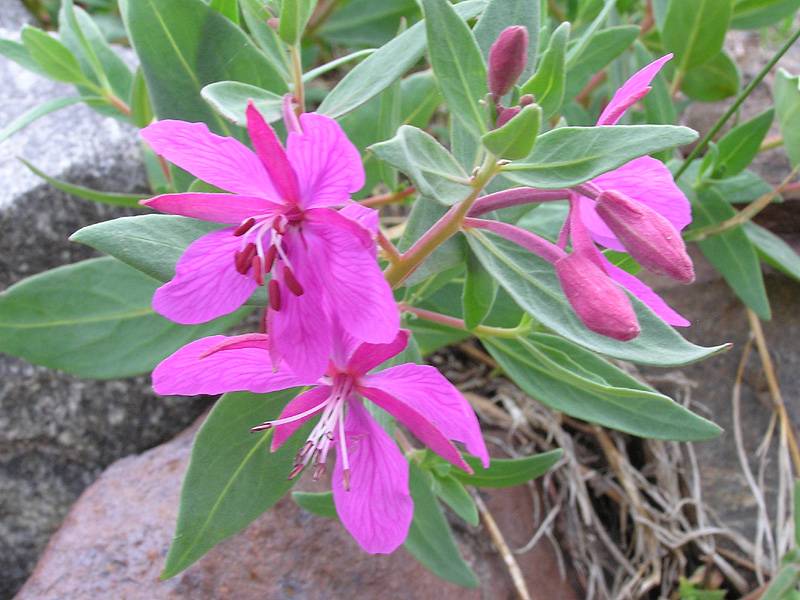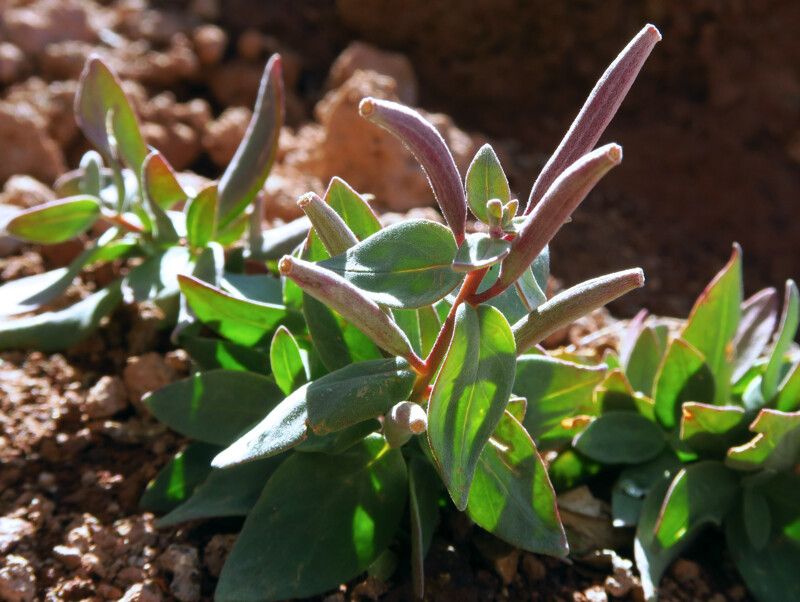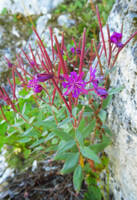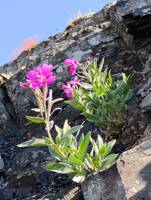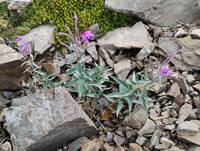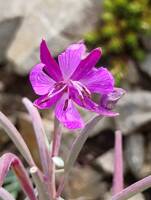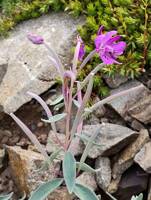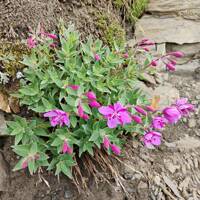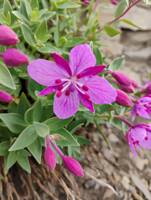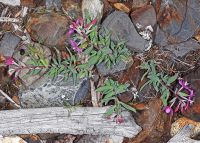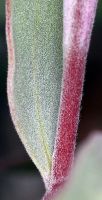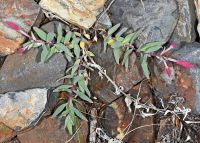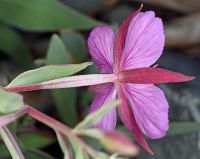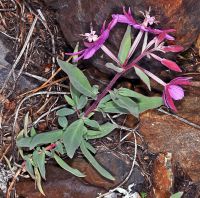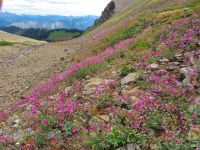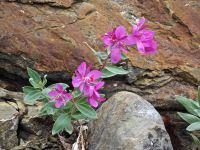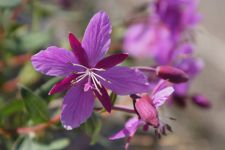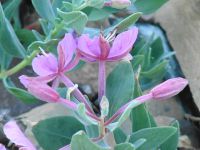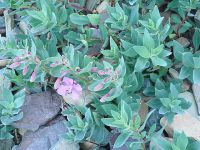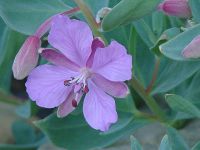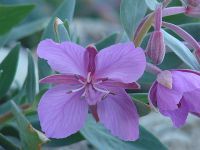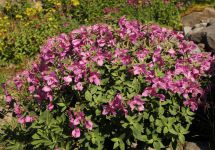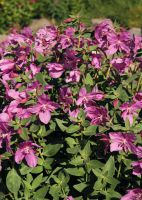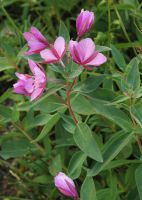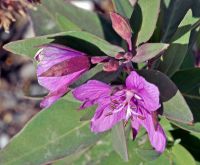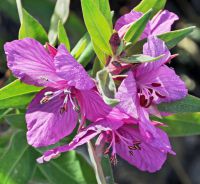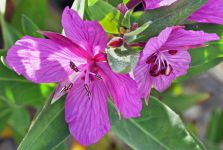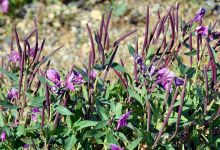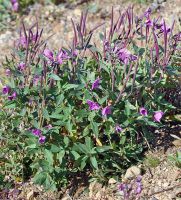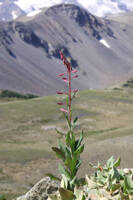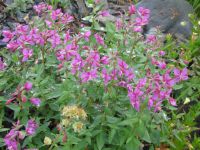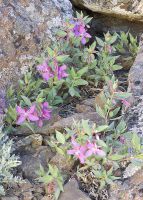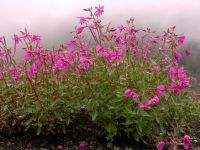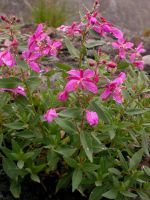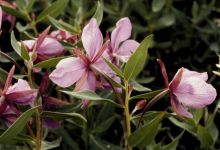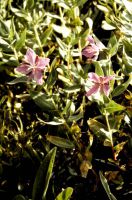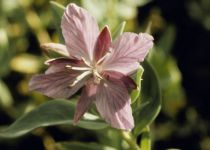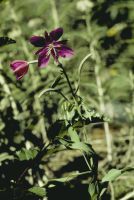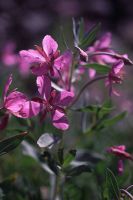Distribution: Occurring in the Olympic Mountains and on both sides of the Cascades crest in Washington; Alaska to California, east to the Rocky Mountains, northern Great Plains, Great Lakes region, and eastern Canada; circumboreal.
Habitat: Subalpine to alpine river bars, gravelly stream banks, snowmelt areas, and seasonally drier slopes.
Flowers: June-September
Origin: Native
Growth Duration: Perennial
Conservation Status: Not of concern
Pollination: Bumblebees, bees, moths, hummingbirds
Perennial from a stout, woody crown, without rhizomes, the stems many, simple to freely-branched, erect, 1-3 dm. tall.
Leaves opposite below, lanceolate to ovate, entire to denticulate, 2-6 cm. long, sub-sessile, glaucous.
Inflorescence of 3- to 12-flowered racemes, the lower floral leaves only slightly reduced; pedicels 3-40 mm. long; sepals 4, reflexed, distinct, joined to the top of the ovary, purplish, lanceolate, 10-15 mm. long; petals 4, obovate to broadly deltoid-obovate, short-clawed, 15-25 mm. long, rose-purple to pale purple to occasionally white; stamens 8; style shorter than the stamens, glabrous; stigma deeply 4-cleft\; ovary inferior, 4-celled.
Capsule 3-8 cm. long; seeds with a tuft of tawny hair at the tip.
Publication: Hort. Brit. (ed. 2) 198. 1830.
Epilobium latifolium L. [HC]
PNW Herbaria: Specimen records of Chamaenerion latifolium in the Consortium of Pacific Northwest Herbaria database
WA Flora Checklist: Chamaenerion latifolium checklist entry
OregonFlora: Chamaenerion latifolium information
E-Flora BC: Chamaenerion latifolium atlas page
CalPhotos: Chamaenerion latifolium photos

